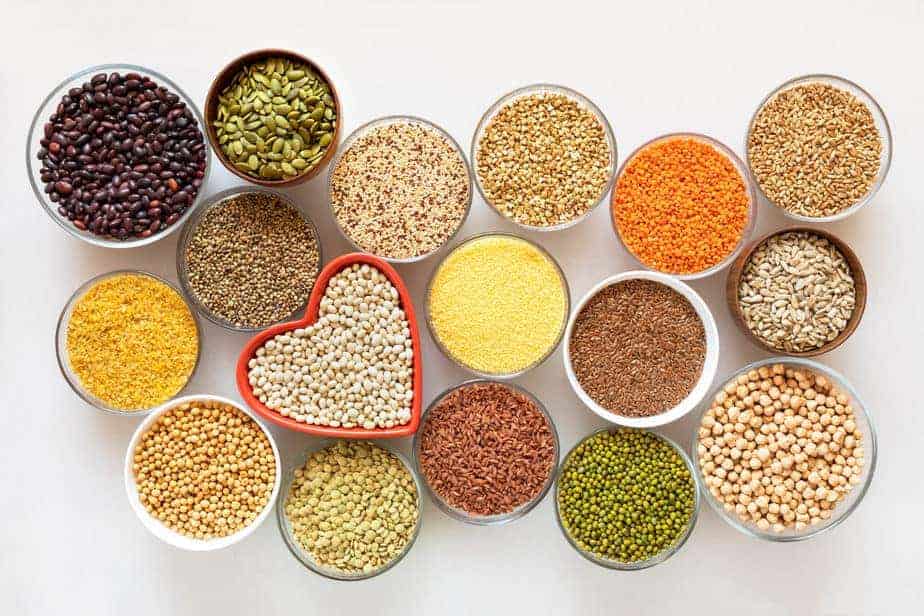Gluten-Free vs. Grain Free vs. Wheat-Free
Talk about confusing. You may think these are all the same, but after reading the differences in these comparisons, here’s what I found.
What Is Wheat?
Wheat is a grass that produces a cereal grain (seed) used in foods.
There are 6 different types of wheat.
- Hard Red Winter.
- Hard Red Spring.
- Soft Red Winter.
- Durum.
- Hard White Wheat.
- Soft White Wheat.
As is stated in the name, it can be a spring or winter grown wheat.
Gluten is a protein found in wheat. Being gluten-free means, the gluten protein has been removed from wheat.
What Is Grain?
Grain is the harvested seed of grasses such as wheat, oats, rice, and corn. Other important grains include sorghum, millet, rye, and barley. Around the globe, grains, also called cereals, are the most important staple food.
https://www.nationalgeographic.org/encyclopedia/grain/
Grains include:
Amaranth
Barley
Buckwheat
Bulgur
Corn – if you’re wondering where corn falls into all of this. Also, fresh corn is gluten-free while processed may not be, read the label for sure on this one. So off the cob or in natural form is gluten-free.
Einkorn
Farro
Freekeh
Khorasan
Millet
Oats
Quinoa
Brown rice
Rye
Sorghum
Spelt
Teff
Wheat
Wild rice
Grain-Free
Grain-Free means that you have eliminated all these grains such as wheat, barley, rye, corn. You may recognize the following forms of grains in your current diet. Going grain-free means eliminating all of these items from your diet.
Any food made from wheat, rice, oats, cornmeal, barley, or another cereal grain is a grain product. Bread, pasta, breakfast cereals, grits, and tortillas are examples of grain products. Foods such as popcorn, rice, and oatmeal are also included in the Grains Group.
Grains are divided into 2 subgroups: Whole Grains and Refined Grains. Whole grains contain the entire grain kernel ― the bran, germ, and endosperm. Examples of whole grains include whole-wheat flour, bulgur (cracked wheat), oatmeal, whole cornmeal, and brown rice. Refined grains have been milled, a process that removes the bran and germ. This is done to give grains a finer texture and improve their shelf life, but it also removes dietary fiber, iron, and many B vitamins. Some examples of refined grain products are white flour, de-germed cornmeal, white bread, and white rice.
https://www.choosemyplate.gov/eathealthy/grains
What is Wheat-Free?
You may think wheat-free and gluten-free are the same thing, but they are not. This is a common misconception because gluten-free is also wheat-free. However, just because something is wheat-free does not mean it is gluten-free.
Confused? Let’s go further.
Wheat-Free means eliminating wheat bran, wheat flour, spelt, durum, Kamut and semolina, Barley, Rye, Triticale, Malt, Brewer’s yeast.
Some wheat-free products may contain the grain barley or spelt; both contain gluten. This is why not all wheat-free products are gluten-free. Wheat-free doesn’t mean all grains containing gluten have been eliminated.
If you want to go gluten-free, grain-free, or just wheat-free, the path will require a thorough understanding of reading ingredient labels. There are often hidden ingredients disguised as other names in food products. I learned this by going soy-free and finding out soy and wheat are in everything.
I recommend reading Wheat Belly by Dr. William Davis.
He opens the door to understanding how wheat can impact your overall health. After reading this book, I realized as well as after my detox, breaking this rule helped me that I had a wheat or gluten intolerance.
The symptoms he represents as being part of wheat sensitivity described me perfectly. Of course, I had to test the theory and realized I had a gluten sensitivity test years back. I forgot about this test but dug up my test results to see if it was true.
Yes, I was tested, and the results were negative for Alpha-Gliadin. But after doing my food elimination diet to find out what I was reacting to, I had to second guess those results. Here is what I found, in case you’ve had the same testing but are still experiencing some sensitivity.
According to Cyrex, the company that did my testing, I was only tested for one – Alpha Gliadin.
Being Gluten Sensitive isn’t as black-and-white as once thought. Actually, gluten is a misnomer – “gliadin” is the portion of wheat that triggers an immune response in people (since “gluten” is commonly used I will stick with that term). It also has been discovered that wheat is made up of more than 100 different components that can cause a reaction, not just one (gliadin).
Until now testing for Gluten Sensitivity has only been against one of those components, alpha-gliadin. Through extensive research, Cyrex pinpointed the twelve components of wheat that most often provoke an immune response.
This new test greatly expands the parameters of gluten sensitivity testing, catching those who may have previously tested negative because they don’t react to the alpha-gliadin. A ‘false negative’ occurs when the test results say a condition is not present when in reality there is a problem. Many forms of standard testing for celiac disease or gluten sensitivity do not include the right markers or enough of the right markers.
https://store.thedr.com/product/array-3x-wheat-gluten-proteome-reactivity-autoimmunity/
So, yes, you can test negative for Alpha-Gliadins creating a false negative for other wheat reactions. I was not tested for the twelve components, only one. I urge you to check if you’re being tested for one Alpha-gliadins before determining whether or not you have a gluten intolerance.
This test is done through Cyrex and is not covered by insurance. You’ll have to pay out of pocket. So be ready for that if you choose to do this testing. It can be costly, depending on how much you’re willing to spend.
Elimination Diet
You can also do an elimination diet and determine what your body reacts to. This will take some time and record tracking, but it will help you in the beginning to decode your health and sensitivities.
There is a definite possibility that I am intolerant of these other components. After doing my elimination diet and tracking my food, I certainly have a sensitivity to gluten/wheat. And I also learned that eating corn causes some of the same reactions.
That is where my gluten-free journey began. You’ll be so glad you tried an elimination diet to determine where your root cause of aliments may be coming from. It’s worth a try, and at the very least, you’ll be eating healthier as you’ll be eating mostly whole foods.
You May Struggle At The Beginning
But It Will Be Well Worth It In The End.
You’ll feel so much better, especially if you’re experiencing gastrointestinal problems, allergies, digestive issues, congestion, and more. Wheat is known for exacerbating these issues and maybe the cause of your discomfort.
Of course, everyone is different. Not two people are the same; therefore, no two people will have the same outcome. What works for one may not for another, and that is ok. The goal is to find what works for you and what makes you feel better.
I wish you peace and guidance on your journey. Take care and be well.
UPDATE 12/29/21
If you’re looking for a food sensitivity test, you can try EverlyWell. Their test offers comprehensive testing of 204 foods. The test is easy, it’s a simple finger prick, and includes paid return shipping. Within a week of the lab receiving and processing your test, you get the results. This does not include the 12 markers mentioned above. But this is a great starting point in understanding any food sensitivities.
I’ve recently tried TestMyAllergy.com because it tests for more gluten markers. The test is around the same cost as EverlyWell, but requires you to pay for mailing the test back via regular mail. While this isn’t a big deal, it was annoying since I don’t keep stamps on hand. Who does? So I had to go to the Post Office to mail it out.
Results are still pending, but I will update you if the test reveals any further results regarding gluten sensitivity.




